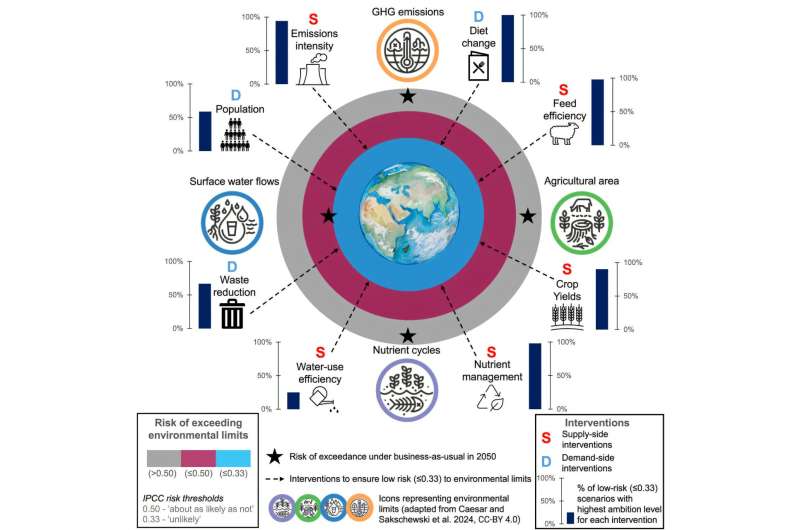In a world grappling with environmental challenges, the way we produce and consume food is under intense scrutiny. Agriculture, responsible for over 20% of global greenhouse gas emissions and consuming more than 70% of freshwater resources, is a leading cause of deforestation and nutrient pollution. If current trends persist, the global food system could jeopardize climate targets, pushing us past critical environmental thresholds by 2050.
New research published in One Earth explores pathways to maintain the food system within these limits. The study identifies a combination of high-impact changes, including adopting flexitarian diets, improving farming practices, and reducing food waste, as essential strategies.
Understanding Planetary Boundaries
Planetary boundaries define the safe operating space for humanity, encompassing nine critical environmental limits, such as freshwater use, biosphere integrity, and climate change. Human activities have already breached six of these boundaries, risking irreversible changes to Earth’s stability. Transforming agricultural practices is crucial to keeping within these limits.
Previous studies have examined potential changes to make food production sustainable, but varying models have made comparisons difficult. To address this, researchers synthesized data from numerous studies, creating a comprehensive database of future food system scenarios. This meta-analysis enables policymakers to evaluate which strategies can effectively maintain environmental safety by 2050.
Effective Strategies for Sustainable Agriculture
The research highlights significant variations in the effectiveness of different interventions. Two strategies stand out for their potential impact on land, water, and emissions: adopting a flexitarian diet and improving livestock breeding.
Flexitarian Diets
Shifting to a flexitarian diet, characterized by reduced animal product consumption, mirrors traditional diets like the Mediterranean and Okinawan. This change could reduce land use by 24%, water demand by 14%, and greenhouse gas emissions by 47%.
Improved Livestock Breeding
Enhancing livestock productivity could lead to an 18% reduction in land use, a 10% decrease in water use, and a 34% cut in emissions. Modern fertilizers have increased crop yields, but their overuse leads to nutrient pollution. Better timing and precision in fertilizer application could reduce nitrogen pollution by 39% and phosphorus pollution by 42%, also saving farmers money.
“Returning to traditional diets and improving livestock productivity are pivotal in reducing agricultural footprints,” the study notes.
Challenges and Opportunities
The study reveals that no single change can make food production sustainable. Of over a million combinations of potential changes, only 0.02% offer a viable path to staying within environmental limits. Successful strategies typically involve reducing animal-derived calories, enhancing nutrient management, and advancing research to farm with fewer resources and emissions.
Halving food waste and curbing overconsumption are also critical. While the task is daunting, it remains possible. Global efforts, such as those by the United Nations, are underway to accelerate food system transformations.
The Path Forward
Despite the challenges, individual actions matter. Reducing animal product consumption benefits both personal health and the planet. Collective efforts are vital to avoid ecological collapse and safeguard human civilization’s foundations. The tools and knowledge exist; now, ambition and awareness of the stakes are essential.
For more information, refer to the study by Michalis Hadjikakou et al., Ambitious food system interventions required to mitigate the risk of exceeding Earth’s environmental limits, published in One Earth (2025).
